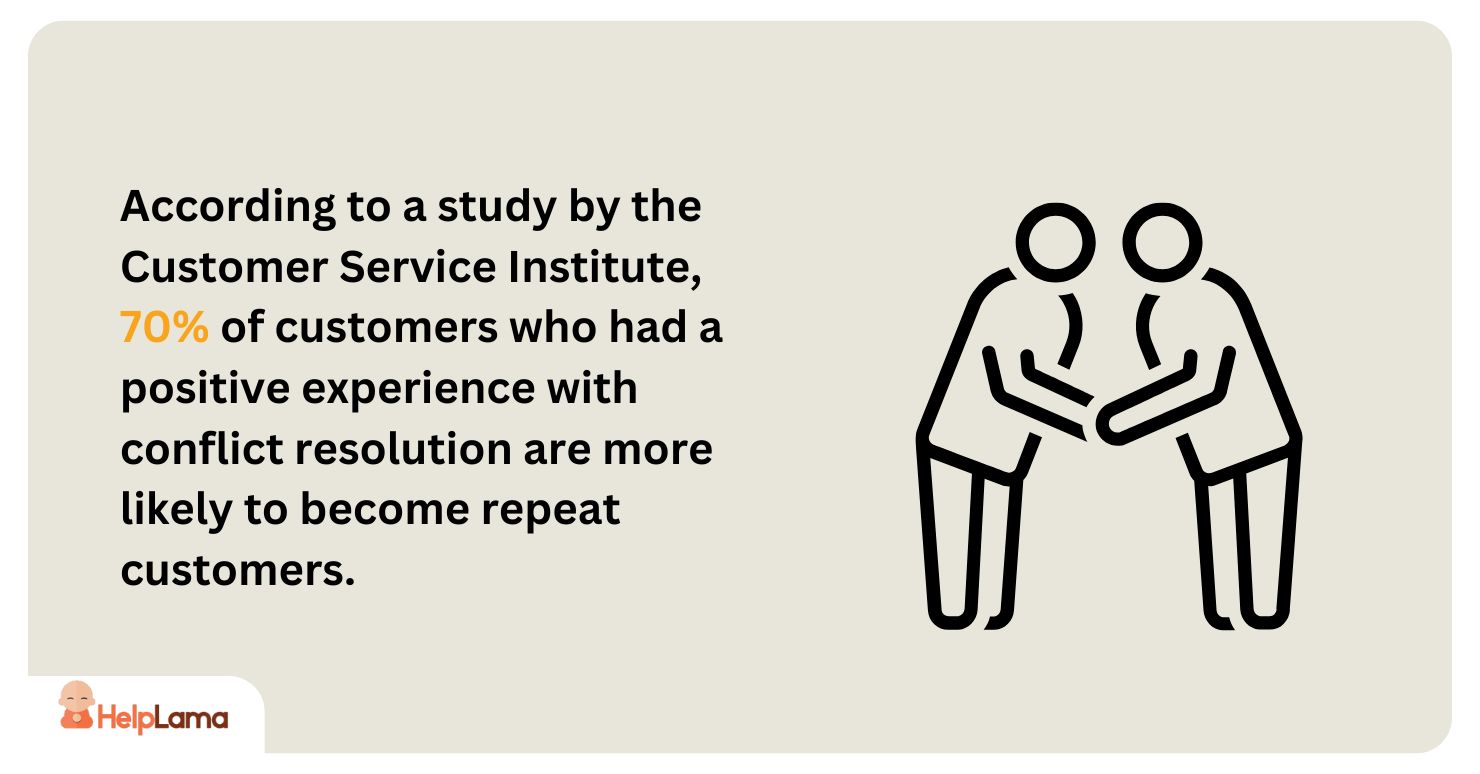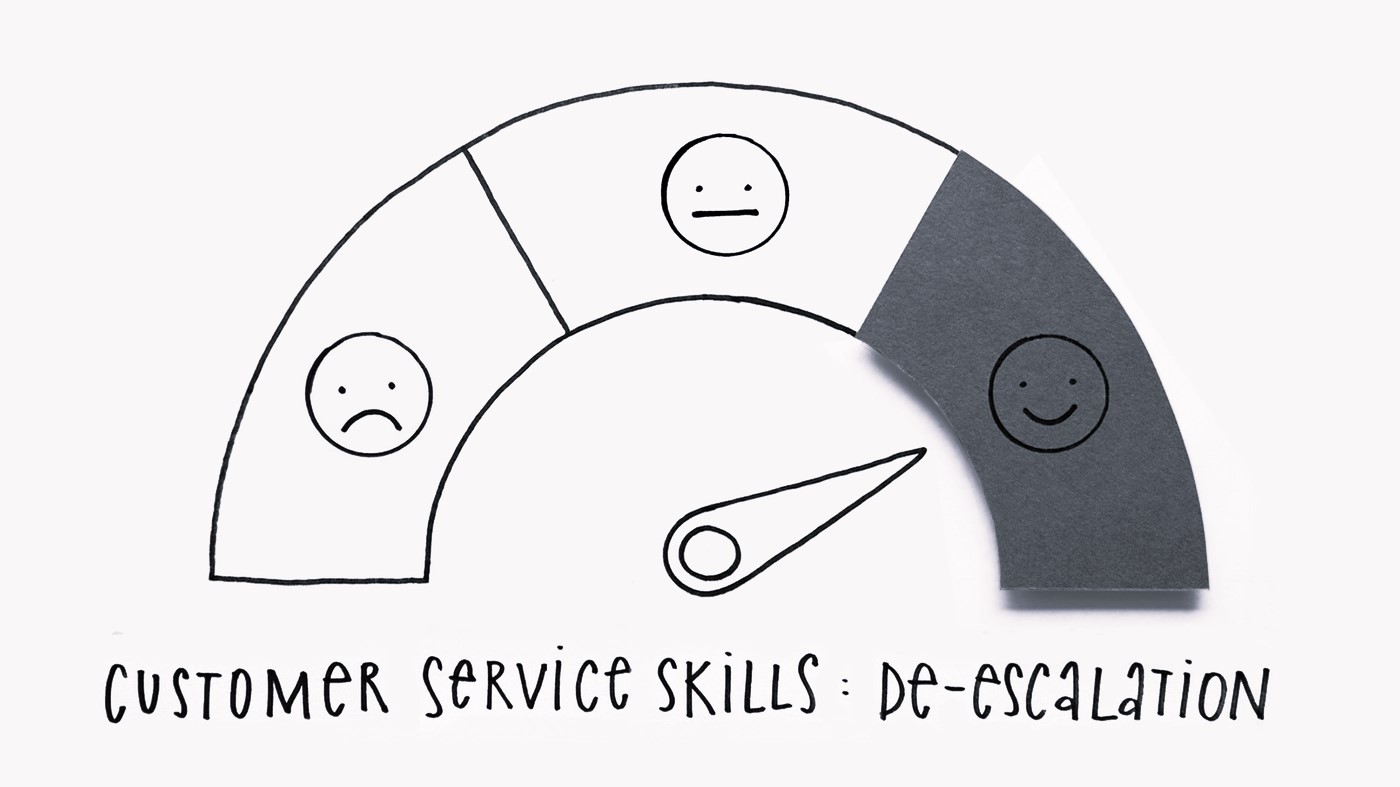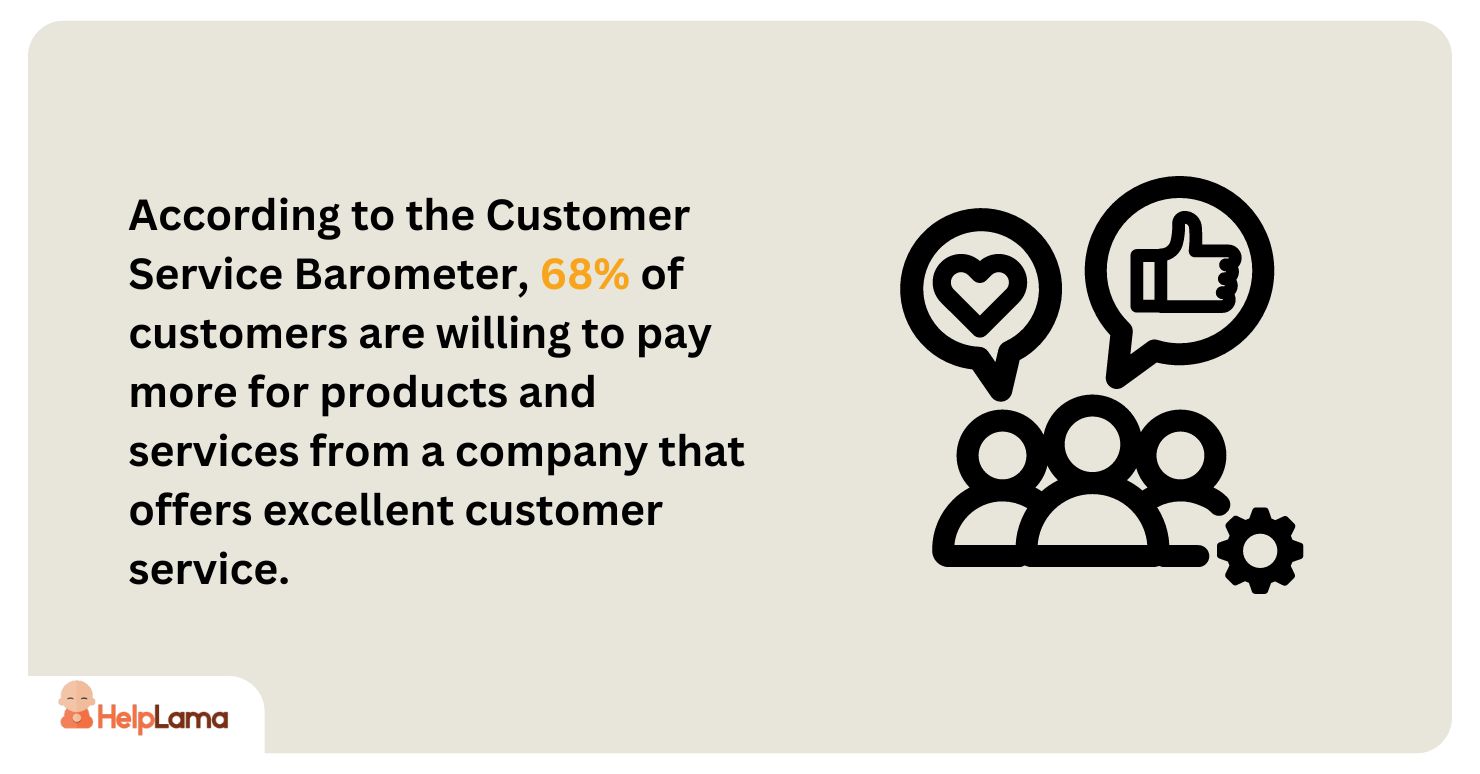Last Updated: July 2025
Knowing how to deescalate an angry customer can make all the difference in maintaining a positive reputation for your business.Dealing with upset customers is a challenging yet essential aspect of customer service.
Understanding how to deescalate an angry customer is crucial for every customer service professional. Whether the issue stems from a misunderstanding, a product defect, or a service failure, your ability to manage the situation effectively can determine the outcome.

According to a study by the Customer Service Institute, 70% of customers who had a positive experience with conflict resolution are more likely to become repeat customers.
Why De-escalation Techniques are Crucial in Customer Service

Customers that are upset or frustrated tend to use harsh language and treat customer support representatives unfairly, and they may submit unfavourable evaluations about the organisation. Successfully adopting de-escalation tactics for customer service is critical in managing these situations. This can imply the difference between keeping a loyal and satisfied customer and dealing with dissatisfied users.
De-escalation tactics are conflict-resolution procedures utilised in a variety of professions, including customer service. These strategies frequently demand professionals to manage their emotions in order to effectively serve distressed clients and achieve their work objectives.
Customers are particularly frustrated by the following two common scenarios: First, 33% of users are irritated when they are forced to repeat the same information to numerous agents and are unable to connect with the one with whom they initially converse. Second, 33% of customers are dissatisfied with waiting on hold for an extended period.
Simply delivering correct information and timely responses is not enough. It is critical to provide this information in a calm and empathic manner, ensuring that the client feels understood and respected. Finally, your customer support team’s effectiveness is determined by their ability to provide excellent customer service.
5 Types of Angry Customers

1. The Aggressive Customers
Typically, these people are quick to rage, critical, and verbally aggressive, feeling that their needs come first. They may yell, complain, or become physically aggressive.
Handling Approach:
Based on customer service de-escalation training strategies, it is critical to remember that no matter who is correct, it is essential to apologise quietly and confidently. Request that they describe their problem once they have cooled down. Avoid matching their hostility; instead, answer gently and do not take their insults personally. Offer a solution once they’ve gathered their thoughts. If you work with them effectively, these clients can become dedicated advocates for your company.
2. The Habitual Complainer
Some customers, known as persistent complainers, find fault in almost everything, from prices to minor matters such as shirt colours. They are difficult to please, frequently resulting in tiredness and tension.
Handling Approach:
Recognise that you cannot please everyone, particularly frequent complainers. Always listen carefully and work to de-escalate any increasing tensions. Respond calmly, without offering excuses. Address genuine issues wherever possible, and try to handle several complaints in one session to reduce encounters. Creating and managing digital content that answers common issues can also assist to alleviate irritation by offering clear, easily available information.
3. The Indecisive Customer
These clients are continuously looking for assurances on issues such as price and quality. They frequently ask numerous questions yet struggle to complete a transaction.
Handling Approach:
Before dealing with unhappy consumers of this nature, ascertain their primary worry, whether it is price or quality. Use incentives or limited-time offers to encourage a decision. Use persuasive communication while remaining cool yet firm to save time and increase sales.
4. The Impatient Customer
People like this want fast results and may not grasp restraints, such as unavailable features or after-hours restrictions. Their impatience is frequently expressed as frustration, with statements such as “I can’t believe it” and threatening to select competitors.
Handling Approach:
Ensure a quick reaction. When addressing problems, use de-escalation strategies to keep the environment peaceful. Explain any delays and reassure them that you will respond as soon as possible. If feasible, send them to accessible colleagues for faster assistance.
5. The Know-it-all Customer
‘Know-it-all’ clients believe they are experts and frequently dominate conversations while being critical. Their demeanour may be an attempt to negotiate a better deal.
Handling Approach:
Boost their ego with honest compliments on their product knowledge. Avoid conflict. When correcting someone, begin with agreement, such as ‘You’re right, but…’. Ensuring that people feel heard and respected can increase loyalty.
9 Best De-escalation Techniques for Customer Service Agents
1. Stay Calm and Composed
Why It Matters
Staying composed establishes the mood for the exchange and may alleviate the customer’s frustration. If a customer picks up on irritation or rage in your tone, it can make the situation worse.
How to Do It
- Breath Control: Control your breathing by taking deep inhalations to stay calm.
- Tone of Voice: Maintain a calm and consistent speaking volume.
- Body Language: Make sure your posture and facial expressions are welcoming and not aggressive, even during phone conversations, since your tone can communicate those same physical signals.
2. Actively Listen
Why It Matters
Demonstrating active listening communicates to the customer that you respect their worries and are sincerely committed to helping them solve their problem. This can aid in lessening their frustration.
How to Do It
- Paraphrase: Reflect the client’s issues using your own language to demonstrate comprehension.
- Recognize Emotions: Acknowledge their feelings by stating, “I hear that you’re feeling upset.”
- Refrain from interrupting: Wait for them to finish talking before replying.
3. Show Empathy
Why It Matters
Having empathy assists in establishing a bond with the customer. When customers perceive being understood, they are more inclined to relax and collaborate with you to address the problem.
How to Do It
- Use Empathic Statements: Employing empathetic statements such as “I understand why you might feel frustrated” can have a significant impact.
- Personalize the Interaction: Customize the interaction by addressing the individual by their name and mentioning specific details related to their problem.
- Share Similar Experiences: Connect with their situation by discussing how you would react in a comparable scenario.
4. Apologize Sincerely
Why It Matters
An authentic apology has the power to calm anger by recognizing the customer’s displeasure and owning up to the problem.
How to Do It
- Be Specific: Provide specific details to address the particular concern that the customer is unhappy with.
- Avoid Defensiveness: Concentrate on their emotions instead of trying to justify the situation.
- Express Regret: Utilize expressions such as “I regret that this occurred” or “I apologize for any inconvenience.”
5. Offer Solutions
Why It Matters
Giving the customer a clear path to solving the issue demonstrates your dedication to resolving the problem and can reduce their frustration.
How to Do It
- Give Options: Offer various solutions for the customer to select from.
- Explain Steps: Provide a detailed plan of the steps you intend to take and when you plan to execute them.
- Follow Through: Make sure to follow through to verify that the problem has been addressed.
6. Set Clear Expectations
Why It Matters
Having clear expectations helps avoid additional frustration by informing the customer of what to expect and when it will happen.
How to Do It
- Be Transparent: Provide a thorough explanation of your capabilities and limitations.
- Provide Timelines: Give a practical deadline for resolving the problem.
- Communicate Regularly: Ensure the customer stays informed on the status.
7. Maintain a Positive Attitude
Why It Matters
Having a positive mindset can redirect the customer’s attention from the issue to the resolution, leading to a more enjoyable interaction.
How to Do It
- Use Positive Language: Concentrate on your abilities instead of your limitations..
- Stay Patient: Stay calm and patient, even in situations where the customer is not.
- Show Willingness: Display a readiness to assist in resolving the problem.
8. Escalate When Necessary
Why It Matters
Understanding when to take an issue to the next level guarantees that the customer receives the appropriate assistance from upper management if their issue cannot be resolved by you.
How to Do It
- Identify Limits: Be aware of when a problem is outside of your influence or jurisdiction.
- Explain the Process: Notify the client that you will escalate their concern to guarantee a proper resolution.
- Follow Protocol: Utilize the escalation protocols of your organization for a seamless handover.
9. Follow Up
Why It Matters
Continuing to check in demonstrates to the customer your concern for their happiness and dedication to completely resolving their problem.
How to Do It
- Check In: Reach out to the client a few days later to confirm that their problem has been addressed.
- Ask for Feedback: Seek information on their encounter and ways to enhance.
- Thank Them: Demonstrate gratitude for their patience and input.
Utilizing Technology in De-escalation
Integrating technology into customer service can greatly improve de-escalation endeavors. AI-driven chatbots, such as those provided by Saufter, are able to offer immediate replies and handle initial customer engagements, decreasing waiting periods and annoyance. Automated systems have the ability to rapidly recognize typical problems and offer standard responses, allowing human agents to focus on more complicated scenarios.
Moreover, CRM software aids in monitoring customer engagements, maintaining uniformity, and preventing the need to reiterate details. Video support and co-browsing tools enable agents to offer immediate help, helping customers feel supported and heard. By utilizing these technologies, companies can enhance response times, customize interactions, and efficiently calm tense situations, resulting in increased customer satisfaction and loyalty.
Also Read – 9 Best AI Chatbot Platforms You Need To Know!
Let us now introduce the best customer service platform – Saufter.io
Saufter for AI- powered Chatbot

Saufter is an innovative platform specifically designed to build AI-powered chatbots. It combines an intuitive user interface with advanced AI capabilities, making it ideal for beginners and experts alike.
- User-friendly Interface: Saufter’s drag-and-drop editor allows for quick and easy chatbot design without any coding skills required.
- Advanced AI Capabilities: With built-in machine learning and natural language processing, Saufter can understand and respond to complex user queries effectively.
- Integration Flexibility: Saufter supports integration with multiple platforms including websites, social media, and messaging apps, ensuring your chatbot is available wherever your customers are.
- Analytics and Feedback: Saufter provides comprehensive analytics and feedback tools, helping you continuously improve your chatbot’s performance.
Conclusion
Effectively calming down a irate customer necessitates a combination of understanding, engaging in active listening, and problem-solving abilities. By using these methods and taking advantage of technology, customer service experts can transform difficult interactions into chances to create better customer connections. Knowing how to calm down an upset customer not only resolves current problems but also leads to prolonged customer happiness and business prosperity.
According to the Customer Service Barometer, 68% of customers are willing to pay more for products and services from a company that offers excellent customer service.


















